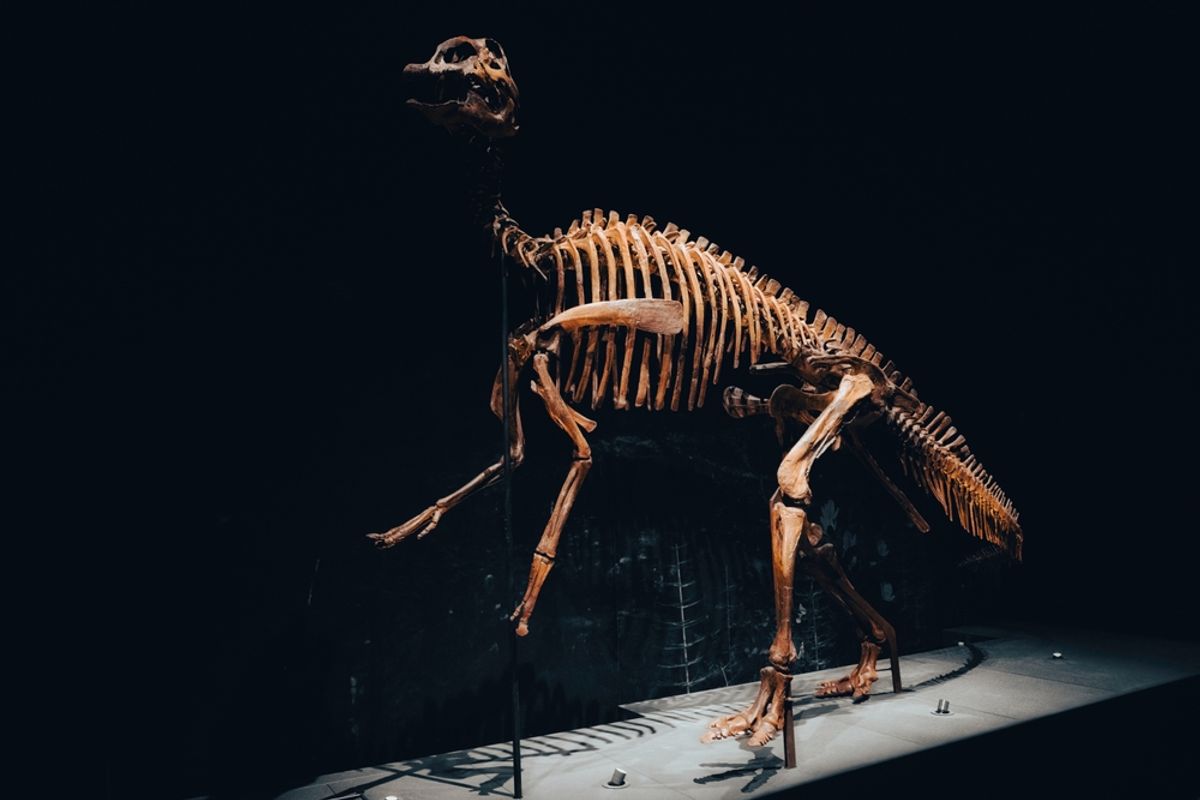What kind of animal had horse-like hooves, a duck bill, and miniature scales all over its body? The answer isn’t some fictional creature with different parts stitched together like Frankenstein’s monster, but is instead Edmontosaurus annectens, a dinosaur that once roamed across the western U.S. Things get even weirder with this oddball species — a few of its kind have been found mummified underneath a blanket of clay.
A new study published in Science has shed light on the perplexing backstory of E. annectens specimens that were preserved in a way that basically makes them dinosaur “mummies.” Researchers analyzed two specimens discovered in Wyoming, along with several others buried in an area they’ve dubbed the “mummy zone”.
An Unlikely Dinosaur Fossil
The two known species of Edmontosaurus — E. annectens and E. regalis — were among the last dinosaurs to exist before the Cretaceous-Paleogene extinction event wiped out all non-avian dinosaurs 66 million years ago.
The two species were hadrosaurids, otherwise known as “duck-billed dinosaurs.” True to their name, Edmontosaurus sported long bills that came in handy when gathering plants to eat. Their fossils are found today in several western U.S. states (like Wyoming and Colorado) and in the Canadian provinces of Saskatchewan and Alberta.
Two E. annectens specimens discovered in Wyoming are especially distinct because of how they were preserved. A late juvenile (around 2 years old) and an early adult (5 to 8 years old) from the Cretaceous era Lance Formation caught paleontologists’ attention, as their bodies were impeccably outlined in sediment.
Usually, paleontologists are accustomed to seeing dinosaur remains in the form of fossilized bones or teeth, which can endure for millions of years, unlike soft tissues, which break down easily. The two E. annectens mummies, however, are outliers; several of their features, including skin, spikes, and hooves, have been drawn in clay, presenting researchers with a rare form of mummified preservation.
Read More: Japanese Mermaid Mummy Revealed to Be Paper Mache
Digging for Mummy Dinosaurs
In the new study, researchers mapped out a spot in east-central Wyoming that they call the “mummy zone,” home to the E. annectens specimens.
These dinosaur mummies, though, are unlike human mummies. They haven’t retained any organic tissues, but instead, their bodies have been preserved as clay film that is only 1/100th of an inch thick.
How did these dinosaurs become mummies, exactly? The researchers determined that their carcasses were engulfed in a flash flood, and soon after, a biofilm pulled clay out of the surrounding sediment to cover them. While the organic material underneath eventually dissolved, a 3D template of the carcasses remained.
“This is a mask, a template, a clay layer so thin you could blow it away,” said senior author Paul Sereno, a paleontologist at the University of Chicago, in a statement. “It was attracted to the outside of the carcass in a fluke event of preservation.”
The First Hooves in History
Using imaging tools like micro-CT scans and X-ray spectroscopy, the researchers were able to describe several features of E. annectens.
E. annectens had a fleshy crest that lined the neck and trunk, transitioning into a single row of spikes that ran down the tail. Most of their scales were tiny, only 1 to 4 millimeters across, and wrinkles across the ribcage suggest that their skin was thin.
Most surprising of all, though, are the dinosaurs’ hooves, which the researchers were able to reconstruct with the help of CT scans and 3D images of other duck-billed dinosaur footprints. They say that the tip of each of the dinosaur’s three hind toes was encased in a wedge-shaped hoof with a flat bottom, akin to the hooves of horses.
“There are so many amazing ‘firsts’ preserved in these duck-billed mummies — the earliest hooves documented in a land vertebrate, the first confirmed hooved reptile, and the first hooved four-legged animal with different forelimb and hindlimb posture,” Sereno said.
Read More: Mummified Dogs Reveal Pre-Incan People Honored This Shepherd 1,000 Years Ago
Article Sources
Our writers at Discovermagazine.com use peer-reviewed studies and high-quality sources for our articles, and our editors review for scientific accuracy and editorial standards. Review the sources used below for this article:
